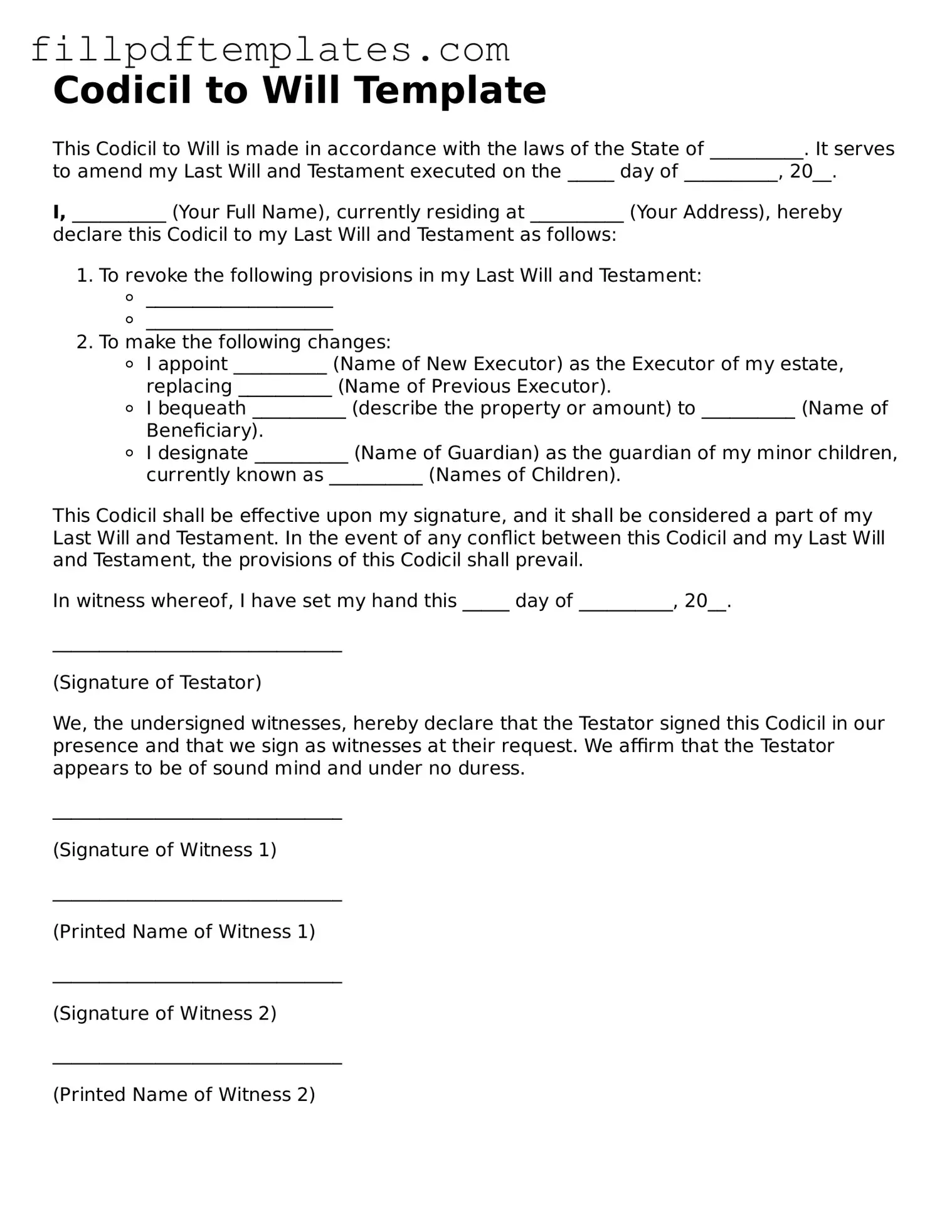Codicil to Will Template
This Codicil to Will is made in accordance with the laws of the State of __________. It serves to amend my Last Will and Testament executed on the _____ day of __________, 20__.
I, __________ (Your Full Name), currently residing at __________ (Your Address), hereby declare this Codicil to my Last Will and Testament as follows:
- To revoke the following provisions in my Last Will and Testament:
- ____________________
- ____________________
- To make the following changes:
- I appoint __________ (Name of New Executor) as the Executor of my estate, replacing __________ (Name of Previous Executor).
- I bequeath __________ (describe the property or amount) to __________ (Name of Beneficiary).
- I designate __________ (Name of Guardian) as the guardian of my minor children, currently known as __________ (Names of Children).
This Codicil shall be effective upon my signature, and it shall be considered a part of my Last Will and Testament. In the event of any conflict between this Codicil and my Last Will and Testament, the provisions of this Codicil shall prevail.
In witness whereof, I have set my hand this _____ day of __________, 20__.
_______________________________
(Signature of Testator)
We, the undersigned witnesses, hereby declare that the Testator signed this Codicil in our presence and that we sign as witnesses at their request. We affirm that the Testator appears to be of sound mind and under no duress.
_______________________________
(Signature of Witness 1)
_______________________________
(Printed Name of Witness 1)
_______________________________
(Signature of Witness 2)
_______________________________
(Printed Name of Witness 2)
